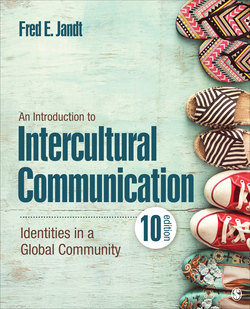Читать книгу An Introduction to Intercultural Communication - Fred E. Jandt - Страница 62
На сайте Литреса книга снята с продажи.
Learning Objectives
ОглавлениеAfter studying this chapter, you will be able to:
Give examples of intercultural communication competence skills appropriate to more than one culture
List the barriers to effective and appropriate intercultural communication
Give an example of ethnocentrism that demonstrates it as a barrier to intercultural communication
Distinguish between stereotypes, prejudice, and racism and show how each is a barrier to intercultural communication
Discuss ethical guidelines for intercultural communication
In Chapter 1, you read that every culture provides its members with rules specifying appropriate and inappropriate behavior. Were you to approach intercultural communication from the perspective of attempting to learn the norms of all cultures, it certainly would be an impossible task. There is no way that you could learn all the rules governing appropriate and inappropriate behavior for every culture with which you came into contact. You would always be doing something wrong; you would always be offending someone. In fact, you wouldn’t even know if you were expected to conform to the other culture’s norms or if you were expected to behave according to your own culture’s norms while respecting those of the other. Your communication likely would suffer, as your violation of norms would be a form of noise limiting the effectiveness of your communication.
This chapter begins, then, with a consideration of intercultural communication competence—that is, the knowledge, motivation, and communication skill of interacting across cultures in ways that are both effective and appropriate (Spitzberg & Changnon, 2009). One might ask if having multiple cultural identities facilitates intercultural communication competence. To answer this, you’ll read about third culture, multiculturalism, and postethnic cultures.
Then you’ll read about anxiety, assuming similarity instead of difference, ethnocentrism, and stereotypes and prejudice as barriers to effective and appropriate intercultural communication. The chapter concludes with a consideration of ethics in intercultural communication.
